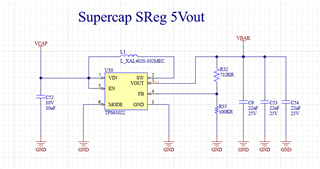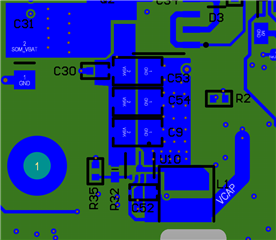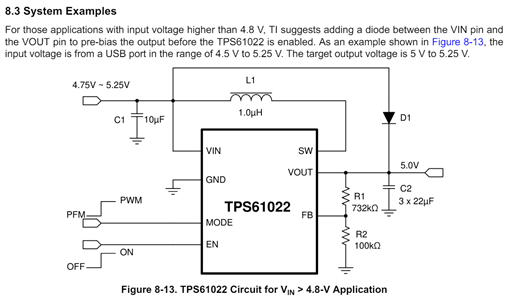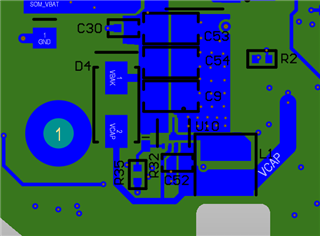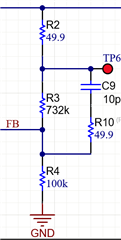This is a follow up to my previous post. I have made some changes to the schematic, specifically I removed the 68uF and replaced it with 3-22uF 0805's. I have re-done the layout to follow as closely as possible the recommended layout. If you could take a look and let me know if this looks reasonable or if there is anything I might do differently, that would be enormously helpful.
